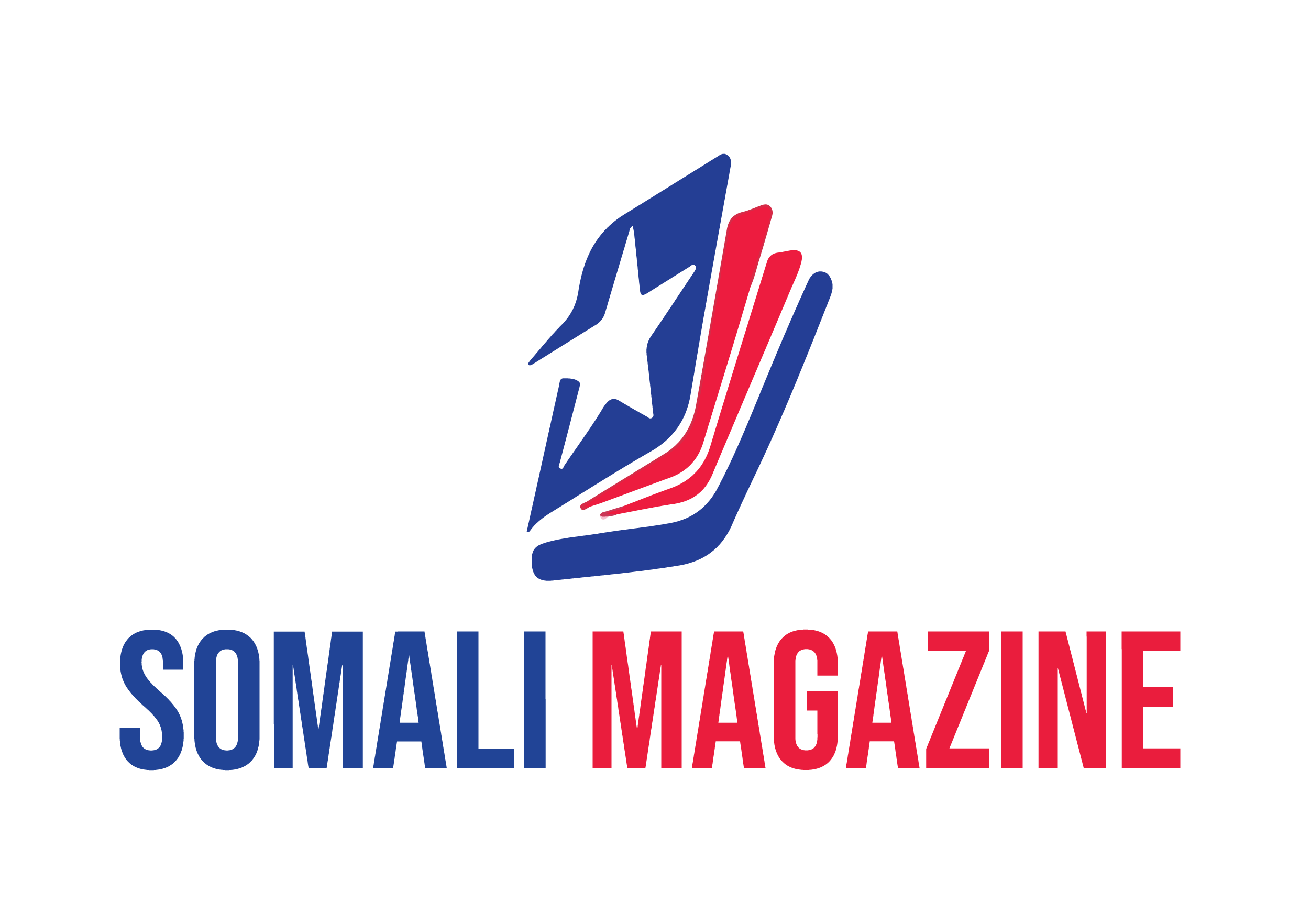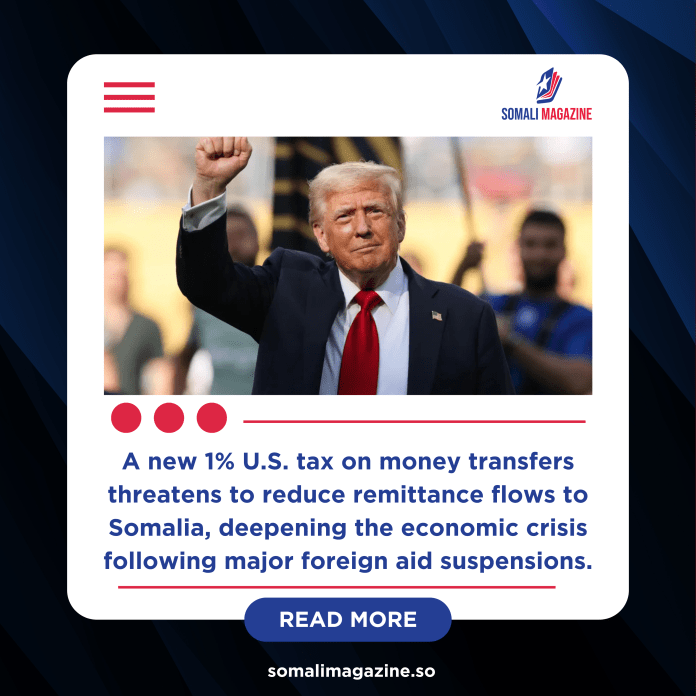Facebook Twitter (X) Instagram Somali Magazine - People's Magazine
A new U.S. tax on money transfers is expected to seriously affect Somali families and others in developing countries who rely heavily on remittances from relatives abroad. The tax comes at a time when foreign aid to many of these countries has already been sharply reduced.
The policy, introduced under former President Donald Trump’s “One Big Beautiful Bill,” imposes a 1% tax on all money transfers sent from the United States. Initially proposed at 3.5% for non-citizens, the tax was later revised by the Senate. It is set to take effect on January 1, 2026.
The goal of the tax is to raise money to fund a $170 billion immigration enforcement plan. But experts say the real cost will be felt in countries like Somalia, where millions of people rely on remittances to survive. In 2023 alone, the Somali diaspora sent back around $1.73 billion—more than all foreign aid combined that year. These funds help families pay for food, school fees, water, and healthcare.
The timing of this new tax is particularly worrying because it follows large cuts in foreign aid. In early 2025, the U.S. suspended over 40% of its financial assistance to Somalia, including development and humanitarian support through USAID. The combination of aid cuts and the new tax may push many families deeper into poverty.
Research shows that even small increases in transfer costs can reduce the amount of money people send. According to the Center for Global Development, a 3.5% tax could lower remittance flows by 5.6%. For Somalia, that means tens of millions of dollars lost every year. In some African countries, remittances make up over 20% of the national income, so any disruption can have serious consequences.
Experts also worry that the tax will encourage people to use informal methods to send money, such as hawala systems, parcel delivery, or cryptocurrency. These methods are harder to track and regulate, and can increase the risk of fraud or abuse. Many migrants may also ask U.S. citizens to send money on their behalf to avoid paying the tax.
Somalia has long relied on both traditional and modern money transfer systems. Over the years, it has moved from hawala networks to digital platforms like EVC Plus and WAAFI. These systems have kept the country’s economy running, even during times of conflict and instability. But the new tax could reduce the volume of transfers and increase costs for both senders and recipients.
Somali remittance service providers already face high costs due to strict compliance rules. With fewer transfers and more taxes, their operations may become even harder to sustain.
Many development experts argue that taxing remittances is the wrong approach. Instead, they suggest reducing the cost of sending money, which currently averages 6.6% per transaction—more than double the United Nations’ target of 3%. Lowering this cost could help offset the impact of reduced aid.
Other ideas include creating matching grants to encourage productive use of remittances, issuing diaspora bonds to fund infrastructure, and expanding legal work opportunities for migrants so they can send more money home.
Despite strong opposition, the remittance tax is likely to go ahead. However, it is expected to raise only $10 billion over 10 years—just 0.1% of the U.S. federal budget—while costing recipient countries around $2.5 billion annually.
For Somali families who depend on monthly support of $50 to $200 from loved ones abroad, this tax could mean choosing between food and survival. With both aid and remittances under pressure, the livelihoods of millions hang in the balance.

